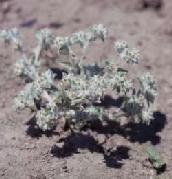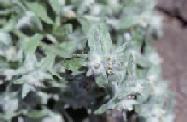
Oregon State University Photo

Oregon State University Photo
Lowland Cudweed
Gnaphalium palustre Nutt.
It has a grayish to white wooly appearance with dense tufts of long woolly hair. The heads are small and the leaves are alternate, entire, and oblong or often broad. It can grow up to 12 inches tall. An annual which flowers May to October. Found in open, usually moist places. It is native to the western region. Among the places reported by Nuttall, the Lowland Cudweed was in the Rocky Mountains and the Lewis' River. Found on the Fort Hall Indian Reservation in southeastern Idaho.
Medicinal Uses
It has been used as an astringent, expectorant, diaphoretic,
aromatic and vulnerary. Indians
used leaves for catarrhal infections and decoction of the leaves for intestinal
and pulmonary inflammation of membranes; also for bruises.
The bruised plant assists in healing wounds, and an infusion may be
used for increasing perspiration
